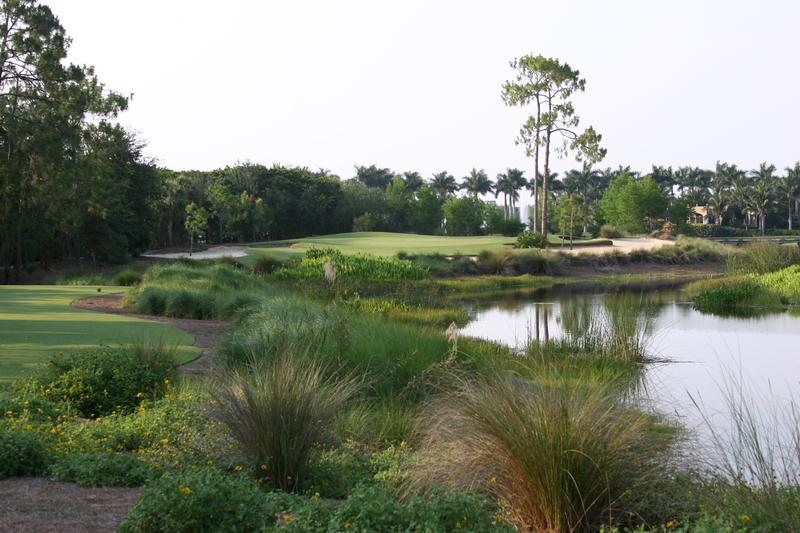Swimming in Circles with Tiburon

Sod-wall bunkers with crisp upper lips. Wall to wall fairways. Sandy areas bleeding into the underbrush. Greens that bubble out like last gasps of the fairways.
When this describes a course in Australia, our mouths water thinking of clubs like Commonwealth, Victoria or Metropolitan. When they describe a golf course in Naples you start thinking “gimmick.”
I suppose there’s no way around it — these features at Tiburón Golf Club, built by Greg Norman’s American design team, are an interlude of pure novelty, even if orchestrated by someone intimate with Australian golf, even if in a region where no authentic golf identity or meaningful attributes exist.
In this kind of choked-off South Florida environment, if you can’t blow up the land like at nearby Calusa Pines, then deriving a low, ground hugging, strategic Aussie rendition is actually a pretty smart approach. The Tiburón property, like everything else down here that’s not out along the coast, consists of ubiquitous, griddle-flat wetlands and, in this case, parts of an old tomato farm.
And it works, in theory. With zero of the natural ground movement common to all good courses, something had to be done to punch up the design. If you’re not pushing some progressive vision around these parts you’re not trying hard enough, and as far as ideas go this one is pretty specific.

You can’t try to do this kind of thing — the no rough concept, the slightly crowned greens pitched at different orientations — without providing enough width to work angles and plan approaches. Tiburón does. The fairways range from 40 yards wide on the skinny side to some that are over 60 yards across. While conditions are not particularly firm nor consistently windy, you still feel the need to play shots, particularly around the greens.
I enjoy the strategic simplicity: big wide fairways, the lack of obvious aiming references, the naked aspect of greens that slope away on numerous sides. The landscape is utterly redundant and a lot of the bunkering ventures into the mindlessly beachy, but the continual presentation of these concepts holds your interest.
But the problem isn’t the concept, it’s the continuity. The first 27 holes were built in the late ’90’s, and even these holes were wildly disconnected. Nine newer holes were later squeezed into a lot on the other side of a six-lane avenue which gives the resort (in this case the marvelous Ritz-Carlton Golf Resort) a far flung 36-hole footprint that threatens to spin out of orbit.

The best holes on the property are the Black Course’s original first nine that played out and back through a dense pocket of woods before suffering the indignity of being re-routed into the new property across the highway between the old 7th and 8th.
The Gold Course, where they play the Franklin Templeton Shootout, spins out in two different directions and never feels like it has a core or center of gravity (because it doesn’t), and then finishes with two stereotypical South Florida water holes — think Doral 18.
Usually you just shrug off or ignore residential courses with holes tucked into crowded corridors or broken off from each other by long passageways; the golf probably wasn’t going to be that enlightened anyway. But at Tiburón the thoughtful hole designs and strong integration of bunkering and green shapes is compromised by all the meandering. There’s a pretty solid 18-hole course here — the Black’s original first nine and the Gold’s second nine might score an 89 or 90 — but as is, the Gold is an 86 and the Black is just one point better (87).
Naples
Architect: Greg Norman Golf Course Design
Year: 1998; 9 holes added in 2002
